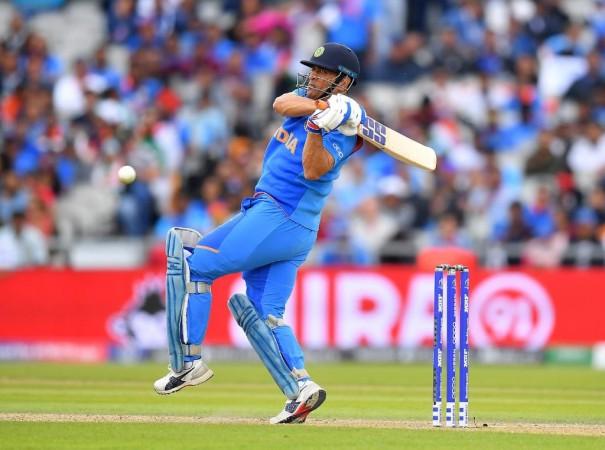
So, it's over! India's dream of winning the World Cup in 2019 was destroyed by New Zealand. The manner of defeat must have put Indians and their team through the emotional wringer. The satisfaction of keeping New Zealand down to 239, shock of seeing the team being reduced to 5/3 with Virat Kohli and Rohit Sharma gone, despair at all seeming lost when Hardik Pandya got out leaving India at 92/6, optimism on Ravindra Jadeja's fightback and lastly, the anguish of a close defeat, all must have Men in Blue and their fans mentally exhausted.
This semi-final was one of the best matches in the history of the World Cup and would be fondly remembered, especially by New Zealand fans. But what made the Kiwis overpower the unstoppable-looking Indians and reach their second successive World Cup final? What made Kane Williamson's side that had lost their last three matches in this tournament, win against a team that had suffered only one defeat in it so far?
While many things, big and small contribute to victory and defeat, there are 6 big reasons that can be clearly identified as the cause of this unexpected result. Let's explore them briefly.
New Zealand winning the toss
As it has been proved several times in this World Cup, chasing a score on the big stage is way more difficult than in an ordinary contest. Hence, Williamson winning the toss and deciding to bat first was extremely crucial. Chasing any score against the Indian team with bowlers like Jasprit Bumrah and Ravindra Jadeja would have been difficult, especially in a World Cup semi-final. The Kiwis have good enough resources in bowling to feel confident about defending a score. Getting the opportunity to set the target gave them a head-start in this match.

Losing just one wicket in first 10 overs
India's bowling, especially Jasprit Bumrah, had been exceptional in this World Cup. Getting the opportunity to bowl first in overcast conditions could well have made the toss a good one to lose for Men in Blue. Considering how easily they chased down Sri Lanka's 265-run target in their previous game, India would have fancied their chances of chasing a similar score. With clouds in the sky, Kohli would have expected Bumrah and Bhuvneshwar Kumar to get few early wickets and make it impossible for the Kiwis to get a good score. This is where the fact that they lost just one wicket in the first ten overs becomes crucial as it gave them a platform to build an innings on.
Williamson and Taylor's intelligence and far-sightedness
Most viewers and commentators watching the match felt surprised by the ultra-cautious approach of Williamson and Ross Taylor while batting. The score was progressing at snail's pace and everyone wondered whether it was a case of the Kiwis wilting under the pressure. Perhaps, many thought, they don't have the courage to take the necessary risks. But in hindsight, it has to be said that the New Zealanders were far more intelligent than others and realised very early on that the pitch was not a flat-deck. They didn't make a foolish attempt to achieve an unrealistic target but instead played according to the conditions. The rest is history.

Latham's catch to dismiss Rohit
Rohit Sharma scored five hundreds in this tournament. In three of those innings, he was dropped early on. But this time, Tom Latham held on to the catch offered by him. Perhaps law of averages caught up with him as well. But catches do win matches and the importance of the catch that dismissed Rohit has to be understood. It was that wicket which set India back and exposed Virat Kohli to the swinging new ball, which led to his wicket. It is possible to imagine that if that catch had been dropped, if not getting a hundred, Rohit would, at least, have managed to prevent Kohli from getting exposed too early. The whole match could have panned out differently.

Santner's vice-like grip
New Zealand had only one spinner in their team – Mitchell Santner and even he is not somebody who turns the ball a lot. But the left-arm orthodox spinner bowled an immaculate line and length to strangle the Indian batsmen to the point where they had to take big risks and, in the case of Hardik and Rishabh Pant, lose their wicket. His tight grip on the batsmen also meant that required rate kept climbing up and forced India to constantly chase the game. Eventually, they failed to catch up.

Dhoni's bizarre tactics
The partnership between MS Dhoni and Jadeja was worth 116 runs. But it was the latter who was doing all the heavy lifting. MSD remained content to just look for singles and bat without any hurry. Clearly, the plan was for Mahi to hold one end up and let Jadeja be the aggressor. But by giving up all aggression and putting all the responsibility on Jadeja, Dhoni made his job tougher and eventually, got him dismissed. This tactic of the former India captain also ensured that the required run-rate reached a point where it was difficult to catch up. Yes, the legendary wicketkeeper-batsman probably banked on the last two overs being bowled by Jimmy Neesham and Lockie Fergusson and thought he could get any number of runs out of them. But that was always going to be a dangerous tactic as strange things happen in the last two overs. In a semi-final, waiting for the last opportunity is not a smart move.

















